Synthetic fragrances
Synthetic fragrances is also known as artificially synthetic fragrance. It is a mimic of the natural flavors manufactured using science and technology by human beings. It refers to a “single-one” spice manufactured or prepared through chemical or biological pathways using different raw materials. Currently, there are already 5000 kinds of Synthetic fragrances in the world with 400 kinds of them belonging to commonly used products. Synthetic fragrances industry has become an important part of fine organic chemical industry.
Synthetic fragrances, according to their chemical structure or functional groups, can be divided into hydrocarbons, alcohols, acids, esters, lactones, aldehydes, ketones, phenols, ethers, acetals, ketals, shiff base, nitrile, macrocyclic, polycyclic, heterocyclic (pyrazine, pyridine, furan furosemide thiazole, etc.), sulfides, halides and so on.
The GB2760 in China allows the application of more than 257 kinds of Synthetic fragrances in the food flavors directories. The commonly used Synthetic fragrances in the beverage can be divided into esters and non-esters, two kinds.
(1) Synthetic esters spices: the esters of organic acids and alcohols, due to undergoing alkali saponification, generally have poor alkali resistance except the third class terpene alcohol esters (terpinyl acetate, linalyl acetate). The esters spices are generally prepared through the esterification of organic acids and alcohols. Among the esters spices listed in Table 1-4-21, acetate esters occupy the majority, up to 12 species. From the component of the alcohol, the number of alcohol ester is 11; the number of iso-amyl alcohol esters is 7; the number of methyl ester is 5. These kinds of esters are all difficultly soluble or almost insoluble in water, but being easily soluble in alcohol and ether. Owing to the highly volatility, it must be sealed and stored in a cool dark place. These esters spices are rarely used alone and are generally blended with a variety of other spices for application.
(2) Non-ester spices are mainly spices including alcohols, aldehydes, volatile acids, and ketones that exclude ester spices, wherein the aldehyde, the phenol and structure having unstable double bond occupies the majority of them. They can be easily oxidized in the air and should be given full attention.
In particular, the aromatic aldehydes that can have cannizarro reaction such as anisaldehyde, vanillin, ethyl vanillin, benzaldehyde, pepper aldehyde and aldehyde having double bond nearly to the aldehyde group (α- amyl cinnamaldehyde, cinnamic aldehyde and citral) are non-unstable esters spices. They are rarely used alone except vanillin and menthol with being blended with other spices for application in most cases.
Artificial spices are flavor components that have not been identified in the natural product (no matter whether or not processed) for human consumption. Such spices have fewer varieties with all of them manufactured by chemical methods, and their chemical structures have not yet been found in nature.
Based on this, the safety of these spices has drawn a lot of attention. In China, those spices included in the GB/T14156-93 "edible spices and coding" all have undergone certain toxicological evaluation, and are considered harmless to humans (in certain doses). Among them, except individual spices undergoing adequate toxicological evaluation, they are all currently classified as temporary license. It should be noted that, with the continuous development of science and technology and human awareness, some varieties originally belonging to artificial spice varieties have also found in some natural foods, thus being classified as nature-identical flavors. For example, the artificial spice, allyl caproate, temporarily used in China is now re-classified as nature-identical spice internationally.
- Structure:
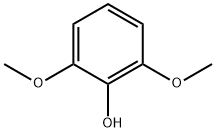
- Chemical Name:2,6-Dimethoxyphenol
- CAS:91-10-1
- MF:C8H10O3
- Structure:

- Chemical Name:4-Propylphenol
- CAS:645-56-7
- MF:C9H12O
- Structure:

- Chemical Name:2-Pyrazinylethanethiol
- CAS:35250-53-4
- MF:C6H8N2S
- Structure:

- Chemical Name:Citronellol
- CAS:106-22-9
- MF:C10H20O
- Structure:
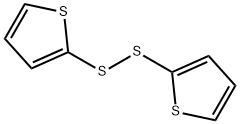
- Chemical Name:2-Thienyl disulfide
- CAS:6911-51-9
- MF:C8H6S4
- Structure:

- Chemical Name:Hydroxyacetone
- CAS:116-09-6
- MF:C3H6O2
- Structure:
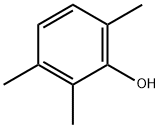
- Chemical Name:2,3,6-Trimethylphenol
- CAS:2416-94-6
- MF:C9H12O
- Structure:

- Chemical Name:3-Heptanone
- CAS:106-35-4
- MF:C7H14O
- Structure:

- Chemical Name:trans-2-Hexenoic acid
- CAS:13419-69-7
- MF:C6H10O2
- Structure:

- Chemical Name:2-Pentanol
- CAS:6032-29-7
- MF:C5H12O
- Structure:

- Chemical Name:Cinnamaldehyde
- CAS:104-55-2
- MF:C9H8O
- Structure:
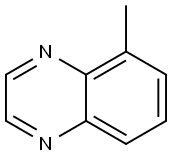
- Chemical Name:5-METHYLQUINOXALINE
- CAS:13708-12-8
- MF:C9H8N2
- Structure:
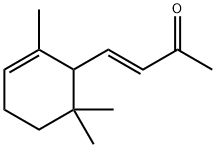
- Chemical Name:alpha-Ionone
- CAS:127-41-3
- MF:C13H20O
- Structure:
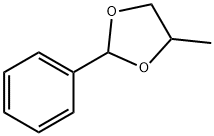
- Chemical Name:Benzaldehyde propylene glycol acetal
- CAS:2568-25-4
- MF:C10H12O2
- Structure:
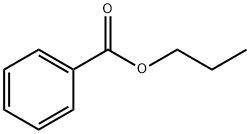
- Chemical Name:PROPYL BENZOATE
- CAS:2315-68-6
- MF:C10H12O2
- Structure:

- Chemical Name:Methyl valeraldehyde
- CAS:123-15-9
- MF:C6H12O
- Structure:
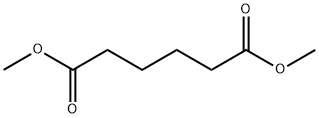
- Chemical Name:Dimethyl adipate
- CAS:627-93-0
- MF:C8H14O4
- Structure:

- Chemical Name:4-Methylthiazole
- CAS:693-95-8
- MF:C4H5NS
- Structure:
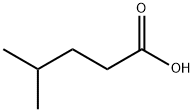
- Chemical Name:4-Methylvaleric acid
- CAS:646-07-1
- MF:C6H12O2
- Structure:

- Chemical Name:α-Methylcinnamaldehyde
- CAS:101-39-3
- MF:C10H10O
- Structure:

- Chemical Name:Benzothiazole
- CAS:95-16-9
- MF:C7H5NS
- Structure:
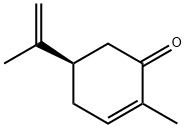
- Chemical Name:L(-)-Carvone
- CAS:6485-40-1
- MF:C10H14O
- Structure:

- Chemical Name:2,5-Dimethyl-1H-pyrrole
- CAS:625-84-3
- MF:C6H9N
- Structure:

- Chemical Name:Ethyl butyrylacetate
- CAS:3249-68-1
- MF:C8H14O3
- Structure:

- Chemical Name:2-METHOXYTHIAZOLE
- CAS:14542-13-3
- MF:C4H5NOS
- Structure:

- Chemical Name:4-Ethylphenol
- CAS:123-07-9
- MF:C8H10O
- Structure:

- Chemical Name:trans,trans-2,4-Decadien-1-al
- CAS:25152-84-5
- MF:C10H16O
- Structure:
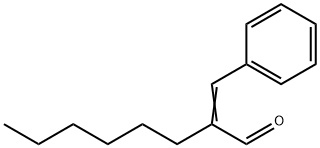
- Chemical Name:alpha-Hexylcinnamaldehyde
- CAS:101-86-0
- MF:C15H20O
- Structure:
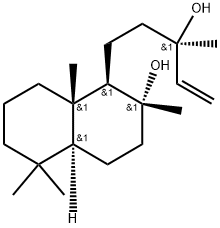
- Chemical Name:Sclareol
- CAS:515-03-7
- MF:C20H36O2
- Structure:
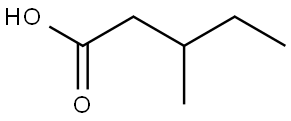
- Chemical Name:DL-3-Methylvaleric acid
- CAS:105-43-1
- MF:C6H12O2
- Structure:

- Chemical Name:2-Nonanone
- CAS:821-55-6
- MF:C9H18O
- Structure:

- Chemical Name:2-Methylthiophene
- CAS:554-14-3
- MF:C5H6S
- Structure:

- Chemical Name:4-Hexanolide
- CAS:695-06-7
- MF:C6H10O2
- Structure:
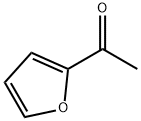
- Chemical Name:2-Acetylfuran
- CAS:1192-62-7
- MF:C6H6O2
- Structure:
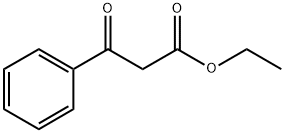
- Chemical Name:Ethyl benzoylacetate
- CAS:94-02-0
- MF:C11H12O3
- Structure:
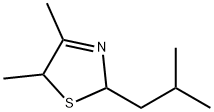
- Chemical Name:4,5-Dimethyl-2-isobutyl-3-thiazoline
- CAS:65894-83-9
- MF:C9H17NS
- Structure:

- Chemical Name:3-Methylthiophene
- CAS:616-44-4
- MF:C5H6S
- Structure:
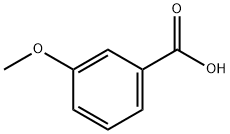
- Chemical Name:3-Methoxybenzoic acid
- CAS:586-38-9
- MF:C8H8O3
- Structure:

- Chemical Name:alpha-Angelica lactone
- CAS:591-12-8
- MF:C5H6O2
- Structure:

- Chemical Name:2,5-Dimethylfuran
- CAS:625-86-5
- MF:C6H8O
- Structure:
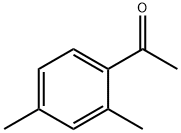
- Chemical Name:2',4'-Dimethylacetophenone
- CAS:89-74-7
- MF:C10H12O
- Structure:

- Chemical Name:trans,trans-2,4-Heptadienal
- CAS:4313-03-5
- MF:C7H10O
- Structure:

- Chemical Name:METHYL MYRISTATE
- CAS:124-10-7
- MF:C15H30O2
- Structure:

- Chemical Name:2,4-Dimethylthiazole
- CAS:541-58-2
- MF:C5H7NS
- Structure:
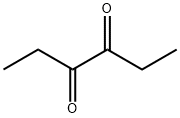
- Chemical Name:3,4-Hexanedione
- CAS:4437-51-8
- MF:C6H10O2
- Structure:
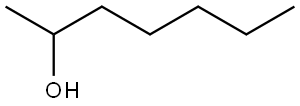
- Chemical Name:2-Heptanol
- CAS:543-49-7
- MF:C7H16O
- Structure:

- Chemical Name:1-Penten-3-ol
- CAS:616-25-1
- MF:C5H10O
- Structure:

- Chemical Name:ETHYL (METHYLTHIO)ACETATE
- CAS:4455-13-4
- MF:C5H10O2S
- Structure:
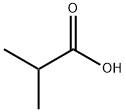
- Chemical Name:Isobutyric acid
- CAS:79-31-2
- MF:C4H8O2
- Structure:
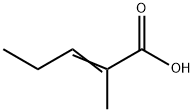
- Chemical Name:2-Methyl-2-pentenoic acid
- CAS:3142-72-1
- MF:C6H10O2
- Structure:

- Chemical Name:Octyl 4-methoxycinnamate
- CAS:5466-77-3
- MF:C18H26O3
- Structure:

- Chemical Name:2,6-Dimethyl-5-heptenal
- CAS:106-72-9
- MF:C9H16O
- Structure:
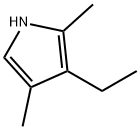
- Chemical Name:2,4-Dimethyl-3-ethyl-1H-pyrrole
- CAS:517-22-6
- MF:C8H13N
- Structure:
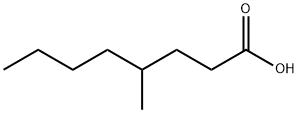
- Chemical Name:4-Methyloctanoic acid
- CAS:54947-74-9
- MF:C9H18O2
- Structure:
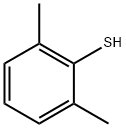
- Chemical Name:2,6-DIMETHYLTHIOPHENOL
- CAS:118-72-9
- MF:C8H10S
- Structure:
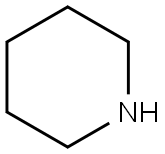
- Chemical Name:Piperidine
- CAS:110-89-4
- MF:C5H11N
- Structure:

- Chemical Name:2,5-Dihydroxy-1,4-dithiane
- CAS:40018-26-6
- MF:C4H8O2S2
- Structure:

- Chemical Name:2-Pentylpyridine
- CAS:2294-76-0
- MF:C10H15N
- Structure:

- Chemical Name:γ-Valerolactone
- CAS:108-29-2
- MF:C5H8O2
- Structure:
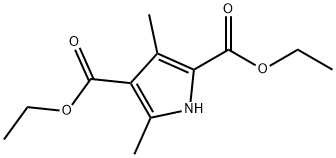
- Chemical Name:Diethyl 2,4-dimethylpyrrole-3,5-dicarboxylate
- CAS:2436-79-5
- MF:C12H17NO4
- Structure:
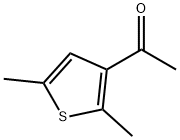
- Chemical Name:3-Acetyl-2,5-dimethylthiophene
- CAS:2530-10-1
- MF:C8H10OS
- Structure:

- Chemical Name:gamma-Octanoic lactone
- CAS:104-50-7
- MF:C8H14O2
- Structure:
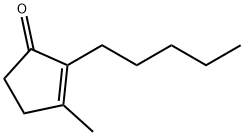
- Chemical Name:2-Pentyl-3-methyl-2-cyclopenten-1-one
- CAS:1128-08-1
- MF:C11H18O
- Structure:

- Chemical Name:4-Heptanone
- CAS:123-19-3
- MF:C7H14O
- Structure:

- Chemical Name:(E,E)-Farnesol
- CAS:106-28-5
- MF:C15H26O
- Structure:
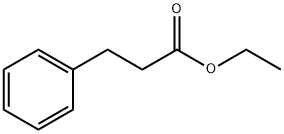
- Chemical Name:Ethyl 3-phenylpropionate
- CAS:2021-28-5
- MF:C11H14O2
- Structure:

- Chemical Name:2-Octanone
- CAS:111-13-7
- MF:C8H16O
- Structure:
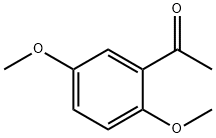
- Chemical Name:2',5'-Dimethoxyacetophenone
- CAS:1201-38-3
- MF:C10H12O3
- Structure:
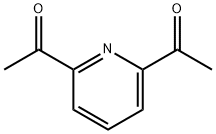
- Chemical Name:2,6-Diacetylpyridine
- CAS:1129-30-2
- MF:C9H9NO2
- Structure:

- Chemical Name:1-Octen-3-ol
- CAS:3391-86-4
- MF:C8H16O
- Structure:

- Chemical Name:Ethyl crotonate
- CAS:623-70-1
- MF:C6H10O2
- Structure:
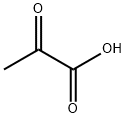
- Chemical Name:Pyruvic acid
- CAS:127-17-3
- MF:C3H4O3
- Structure:
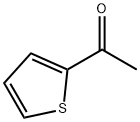
- Chemical Name:2-Acetylthiophene
- CAS:88-15-3
- MF:C6H6OS
- Structure:

- Chemical Name:4-Methyl-5-vinylthiazole
- CAS:1759-28-0
- MF:C6H7NS
- Structure:

- Chemical Name:2-Tridecanone
- CAS:593-08-8
- MF:C13H26O
- Structure:

- Chemical Name:2-Methyl-1-butanol
- CAS:137-32-6
- MF:C5H12O
- Structure:

- Chemical Name:4-Methyl-5-thiazolylethyl acetate
- CAS:656-53-1
- MF:C8H11NO2S
- Structure:
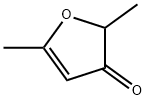
- Chemical Name:2,5-Dimethyl-3(2H)-furanone
- CAS:14400-67-0
- MF:C6H8O2
- Structure:
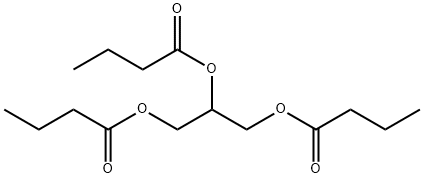
- Chemical Name:Tributyrin
- CAS:60-01-5
- MF:C15H26O6
- Structure:
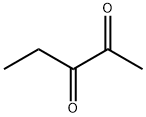
- Chemical Name:2,3-Pentanedione
- CAS:600-14-6
- MF:C5H8O2
- Structure:

- Chemical Name:Butyl hexanoate
- CAS:626-82-4
- MF:C10H20O2
- Structure:

- Chemical Name:2,5-Dimethylthiophene
- CAS:638-02-8
- MF:C6H8S
- Structure:
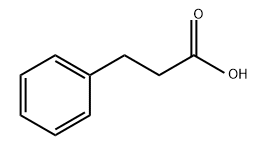
- Chemical Name:3-Phenylpropionic acid
- CAS:501-52-0
- MF:C9H10O2
- Structure:

- Chemical Name:5-Hydroxymethylfurfural
- CAS:67-47-0
- MF:C6H6O3
- Structure:

- Chemical Name:1-Bromopentane
- CAS:110-53-2
- MF:C5H11Br
- Structure:

- Chemical Name:2-Isobutylthiazole
- CAS:18640-74-9
- MF:C7H11NS
- Structure:

- Chemical Name:trans-2-Hexen-1-ol
- CAS:928-95-0
- MF:C6H12O
- Structure:
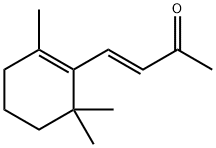
- Chemical Name:β-Lonone
- CAS:79-77-6
- MF:C13H20O
- Structure:
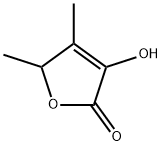
- Chemical Name:4,5-Dimethyl-3-hydroxy-2,5-dihydrofuran-2-one
- CAS:28664-35-9
- MF:C6H8O3
- Structure:

- Chemical Name:1,1-Dimethoxyethane
- CAS:534-15-6
- MF:C4H10O2
- Structure:
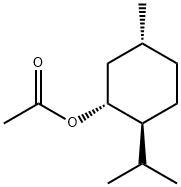
- Chemical Name:(1R)-(-)-Menthyl acetate
- CAS:2623-23-6
- MF:C12H22O2
- Structure:
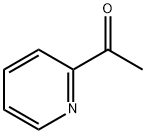
- Chemical Name:2-Acetylpyridine
- CAS:1122-62-9
- MF:C7H7NO
- Structure:

- Chemical Name:1-Pentanol
- CAS:71-41-0
- MF:C5H12O
- Structure:

- Chemical Name:2-Methyl-2-thiazoline
- CAS:2346-00-1
- MF:C4H7NS
- Structure:
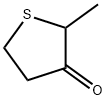
- Chemical Name:Dihydro-2-methyl-3(2H)-thiophenone
- CAS:13679-85-1
- MF:C5H8OS
- Structure:
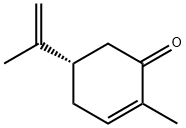
- Chemical Name:D(+)-Carvone
- CAS:2244-16-8
- MF:C10H14O
- Structure:

- Chemical Name:delta-Dodecalactone
- CAS:713-95-1
- MF:C12H22O2
- Structure:
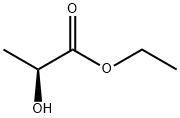
- Chemical Name:Ethyl L(-)-lactate
- CAS:687-47-8
- MF:C5H10O3
- Structure:
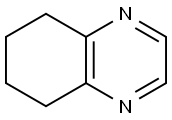
- Chemical Name:5,6,7,8-Tetrahydroquinoxaline
- CAS:34413-35-9
- MF:C8H10N2
- Structure:

- Chemical Name:Quinaldine
- CAS:91-63-4
- MF:C10H9N